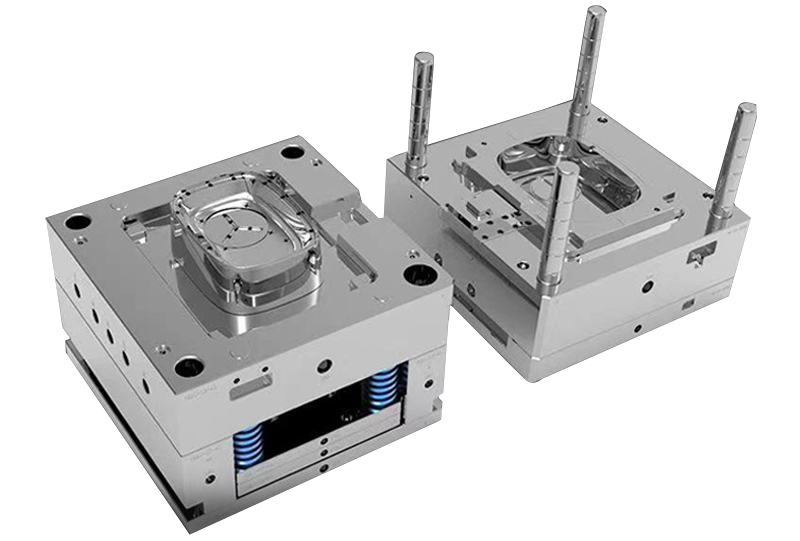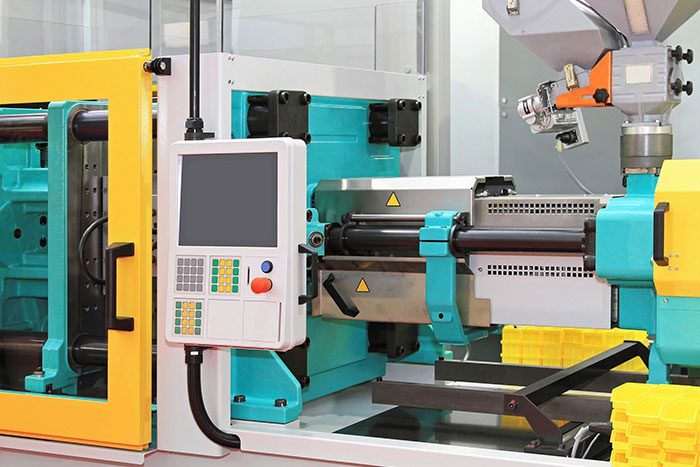Enhancing Product Growth with Advanced Plastic Injection Molding Solutions
Enhancing Product Growth with Advanced Plastic Injection Molding Solutions
Blog Article
Comprehending the Fundamentals of Plastic Shot Molding Procedures
Plastic injection molding serves as a keystone of modern production, supplying a methodical technique to creating complex parts with accuracy. Checking out these important aspects might disclose just how even minor modifications can lead to substantial enhancements in production outcomes, raising concerns regarding the capacity for advancement in this well-known process.
What Is Plastic Shot Molding?
Plastic shot molding is a widely made use of manufacturing process that changes thermoplastic and thermosetting materials into specific and intricate shapes. This method is favored for its capability to generate high quantities of the same get rid of exceptional accuracy, making it an essential approach in various markets, including automotive, durable goods, and clinical devices.
The procedure includes thawing the chosen plastic material and infusing it into a mold and mildew under high stress. The mold, created to the requirements of the wanted part, allows the liquified plastic to materialize as it cools and strengthens. When the product has solidified, the mold is opened, and the completed part is ejected.
Plastic shot molding uses several benefits, including decreased waste, uniformity in manufacturing, and the ability to incorporate complex designs that may be testing with various other producing methods. In addition, it sustains a wide array of products, each supplying special residential or commercial properties that can be tailored for particular applications. As markets remain to introduce, plastic shot molding continues to be at the forefront, enabling the development of advanced products that fulfill evolving customer needs.
The Shot Molding Refine
The injection molding process is an innovative strategy that involves a number of key stages to generate top notch plastic parts. Plastic pellets are fed right into a warmed barrel where they are thawed right into a viscous liquid. This molten plastic is after that infused under high stress right into a precision-engineered mold, which forms the material right into the desired kind.
As soon as the mold and mildew is filled up, the plastic is enabled to cool down and solidify, taking the form of the mold dental caries. Air conditioning time is crucial, as it impacts the cycle time and the last buildings of the molded component. After sufficient air conditioning, the mold and mildew opens, and the ended up part is ejected utilizing ejector pins.

Materials Made Use Of in Shot Molding
Different products can be utilized in the injection molding procedure, each offering unique residential or commercial properties that accommodate details applications. One of the most frequently utilized products consist of thermoplastics, thermosetting plastics, and elastomers.

Thermosetting plastics, like epoxy and phenolic materials, undertake a chemical change during the treating procedure, leading to a rigid, stringent framework. These materials are ideal for applications calling for high warm resistance and structural integrity, commonly utilized in electrical insulators and automobile parts.
Elastomers, consisting of silicone and rubber-based products, give versatility and resilience. Their distinct residential or commercial properties make them suitable for applications that require elasticity, such as gaskets and seals.
Additionally, specialty products like bio-based plastics and composites are acquiring traction for their ecological benefits and improved performance features, expanding the scope of injection molding my company applications in numerous sectors. Understanding the residential properties of these materials is essential for selecting the suitable kind for details projects.
Advantages of Injection Molding
Injection molding sticks out as a very efficient manufacturing process that supplies various advantages for producing intricate get rid of precision. Among the most substantial advantages is the capability to create intricate designs that would certainly be impossible or tough to accomplish with other techniques (Plastic Injection Molding). The procedure allows for thorough features and tight resistances, guaranteeing top notch parts
Furthermore, shot molding is understood for its rapid manufacturing abilities, making it an ideal choice for high-volume manufacturing. When the mold and mildew is created, components can be generated promptly, minimizing preparations and boosting overall performance. This performance not just reduces production expenses but also supplies an one-upmanship in the marketplace.
The versatility of materials utilized in injection molding additionally boosts its appeal. A variety of thermoplastics and thermosetting polymers can be utilized, allowing suppliers to choose products that best meet their particular needs, consisting of strength, adaptability, and warm resistance.
Additionally, the procedure reduces waste, as excess product can commonly be recycled and reused. This sustainability aspect contributes to a minimized environmental effect, making shot molding a responsible production selection. In general, the advantages of injection molding make it a preferred technique for many industries.
Aspects Influencing Item High Quality
While many aspects can affect item quality in shot molding, comprehending these components is vital for accomplishing ideal outcomes. Trick elements include material option, processing criteria, and mold style.
Material selection plays a crucial function, as various polymers exhibit unique properties that impact flowability, strength, and thermal security. Poor material choice can bring about issues such as bending or incomplete dental filling.
Handling criteria, including pressure, cycle, and temperature time, need to be carefully controlled. Variants in these setups can lead to variances in component measurements and surface finish. Exceedingly high temperatures might cause destruction of the polymer, while inadequate pressure can result in short shots.
Mold and mildew design is equally vital, as it identifies the flow of the molten plastic and the cooling process. Inadequately developed mold and mildews may lead to unequal cooling rates, causing residual anxieties and dimensional inaccuracies.

Conclusion
To conclude, plastic shot molding acts as a crucial manufacturing procedure that allows the effective production of premium parts. Proficiency of the injection molding process, including the understanding of materials and the impact of numerous aspects on item quality, is vital for achieving optimum results. The benefits of this technique, such as cost-effectiveness and layout versatility, further underscore its relevance across numerous sectors, strengthening its condition as a preferred selection for high-volume manufacturing.
Plastic injection molding serves as a foundation of modern-day manufacturing, giving a methodical approach to generating complex elements with precision.Plastic injection molding offers numerous advantages, consisting of minimized waste, uniformity in manufacturing, and the ability to integrate intricate designs important link that may be challenging with other producing methods (Plastic Injection Molding). As industries continue to introduce, plastic shot molding continues to be at the leading edge, allowing the growth of advanced products that fulfill advancing consumer demands
The injection molding process is a sophisticated strategy that includes a number of essential stages to produce high-grade plastic elements.In conclusion, plastic shot molding serves as a critical manufacturing procedure that enables the efficient production of premium parts.
Report this page